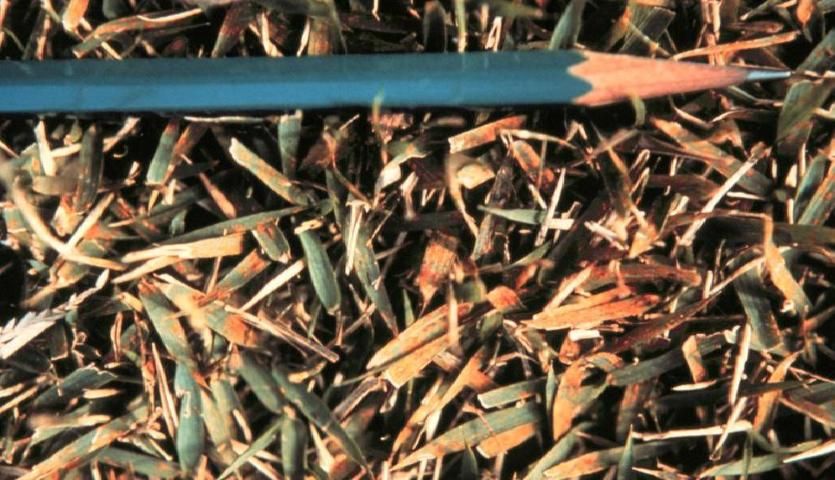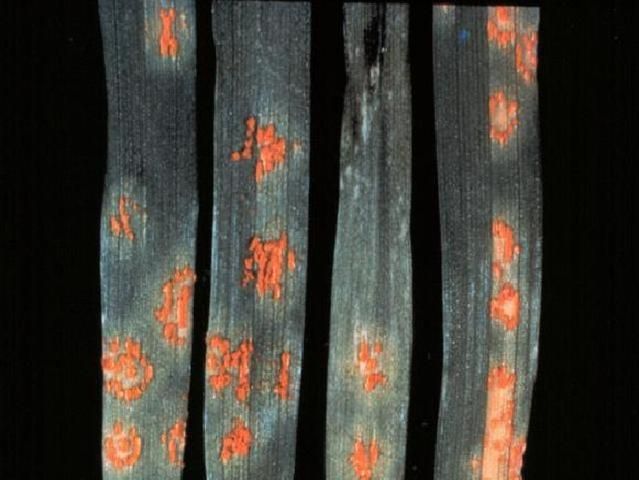Pathogen: Puccinia spp.
Turfgrasses Affected: St. Augustinegrass and zoysiagrass can be affected, but it may also be observed on perennial ryegrass used to overseed lawns in the winter months.
Occurrence: This disease can occur from late fall to early spring when the turfgrass growth is slowed as a result of cool weather. In most situations, the disease disappears as soon as the weather warms and the turfgrass starts to grow vigorously again. It is more severe on turfgrass areas that are stressed from nutrient deficiencies or shade (e.g., under trees or on the north side of a building). The leaves must be wet for infection to occur. This wetness may be from dew, high humidity, rain, or irrigation.
Symptoms/Signs: Initially, light yellow flecks appear on the leaves. If the disease progresses, these flecks enlarge into spots that are parallel to the leaf vein. Eventually, orange pustules (spots) containing spores form (Figure 1). These pustules are parallel to the leaf vein. The spores rub off when touched (Figure 2). Heavily infected areas appear thin and chlorotic (yellow to light brown). The disease may give the turfgrass an ugly appearance, but it will not kill the turfgrass.

Credit: G. W. Simone

Credit: G. W. Simone
Cultural Controls: Proper cultural practices can reduce the risk of rust in turfgrass. It is important to maintain an adequate, balanced fertility program using slow-release nutrient sources. In shady areas, irrigation should be monitored closely to keep the leaves as dry as possible. It is best to water in the early morning hours (between 2:00 and 8:00 a.m.) when dew is already present, so as not to extend the dew period.
Chemical Controls: Fungicide options include azoxystrobin, mancozeb, mancozeb plus copper hydroxide (formulated as a mixture), metconazole, myclobutanil, propiconazole, pyraclostrobin, triadimefon, trifloxystrobin, and triticonazole.
The UF/IFAS Extension Electronic Data Information Source (EDIS) website can be referenced for a homeowner's guide to turfgrass fungicides (https://edis.ifas.ufl.edu/pp154). Fungicide labels indicate site application restrictions, as some fungicides cannot be used on residential lawns. Label directions and restrictions for all pesticides must be followed as required by law. The presence of a fungicide on this list does not constitute a recommendation.
The "Turfgrass Disease Management" section of the Florida Lawn Handbook (https://edis.ifas.ufl.edu/lh040) can be referenced for explanations of cultural and chemical controls.